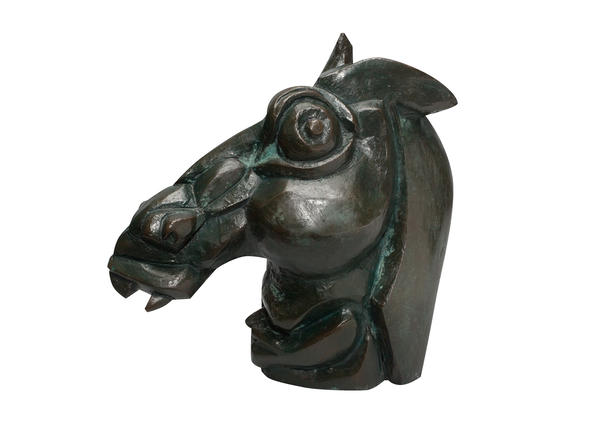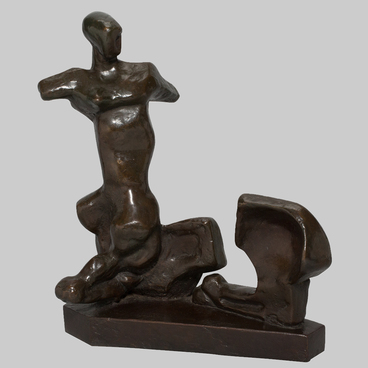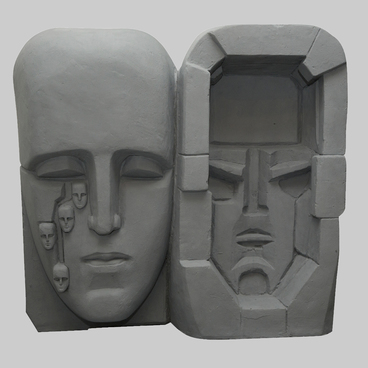The sculpture The Head of a Horse is an example of a philosophical work of art that is conducting a dialogue with the viewer. The sculptor’s style can be defined as metaphysical realism. This work reflects Ernst Neizvestny’s view on the nature of man; this art piece is a synthesis of human nature and animal instincts: in front, on the long neck of the horse, one can distinctly see the features of human face.
The horse is the sculptor’s favorite animal, quite often present in his art. The master skillfully depicts minute details and movement in his artworks. The Head of a Horse might seem static at first sight but is indeed filled with inner energy and power. The figure is expressive, both the proportions and head of the animal are overplayed, the right and left sides – asymmetrical. There is only a hint of mane in the back of the animal’s head without any further elaboration.
Even such a simple, at first glance, animalistic sculpture expresses dualism, that is characteristic of Ernst Neizvestny’s style. The profile on the right presents a calm and serene, anatomically proportional head of an animal, whereas the left side of its head is grotesque, depicting the horse’s violent and unruly nature. A goggling eye and a half-open mouth reflect the animal’s high-strung state.
The sculptor believed that an artist should study life to overcome speculativeness. A step into the unknown and study of the natural and social elements of the human nature were considered essential for real art by Ernst Neizvestny. He believed that the main goal of a master was not the depiction of external beauty, but the bringing to light of inner expression, tension and drama.
The horse is the sculptor’s favorite animal, quite often present in his art. The master skillfully depicts minute details and movement in his artworks. The Head of a Horse might seem static at first sight but is indeed filled with inner energy and power. The figure is expressive, both the proportions and head of the animal are overplayed, the right and left sides – asymmetrical. There is only a hint of mane in the back of the animal’s head without any further elaboration.
Even such a simple, at first glance, animalistic sculpture expresses dualism, that is characteristic of Ernst Neizvestny’s style. The profile on the right presents a calm and serene, anatomically proportional head of an animal, whereas the left side of its head is grotesque, depicting the horse’s violent and unruly nature. A goggling eye and a half-open mouth reflect the animal’s high-strung state.
The sculptor believed that an artist should study life to overcome speculativeness. A step into the unknown and study of the natural and social elements of the human nature were considered essential for real art by Ernst Neizvestny. He believed that the main goal of a master was not the depiction of external beauty, but the bringing to light of inner expression, tension and drama.




